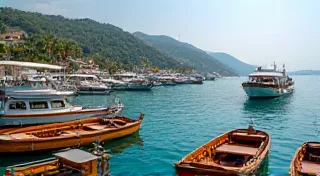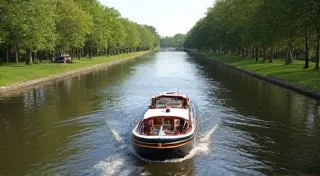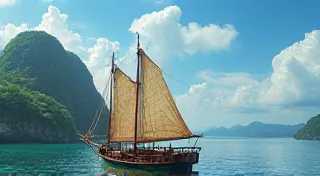The Tjalk: A Dutch Flat-Bottomed Workhorse
The tjalk is a distinctive type of sailing vessel deeply embedded in Dutch maritime history. These flat-bottomed boats, primarily used for carrying goods across the shallow lakes and canals of the Netherlands, represent a unique blend of practicality, ingenuity, and enduring craftsmanship. This article delves into the history and construction of the tjalk, exploring its design features and its vital role in Dutch commerce and culture.
A History Rooted in Necessity
The origins of the tjalk can be traced back to the 18th century, emerging from the Frisian region in the north of the Netherlands. The landscape of Friesland and the surrounding provinces is characterized by a network of shallow lakes, rivers, and canals. Traditional sailing vessels of the time struggled to navigate these waters, often running aground. The need for a vessel capable of handling these conditions spurred the development of the tjalk. Early boat designs were continually adapted to improve navigation in these challenging conditions, often drawing on principles found in other small craft across Europe. The ingenuity involved highlights a broader European history of boatbuilding responses to particular geographic challenges.
Early tjalks were simpler in design, but over time, boat builders refined the design to improve stability, cargo capacity, and sailing performance. The development coincided with a period of significant economic growth for the Netherlands, with the tjalk playing a crucial role in the transport of goods such as grain, peat, timber, and even bricks. Its ability to navigate both inland waterways and coastal waters made it a remarkably versatile workhorse. The construction techniques involved, from timber selection to plank fastening, often reflected broader traditions, reminding us that maritime innovation rarely occurs in isolation. The design principles employed are broadly applicable and can be seen in a variety of boat types worldwide, much like the focused simplicity found in a traditional skiff, emphasizing efficient hydrodynamics.
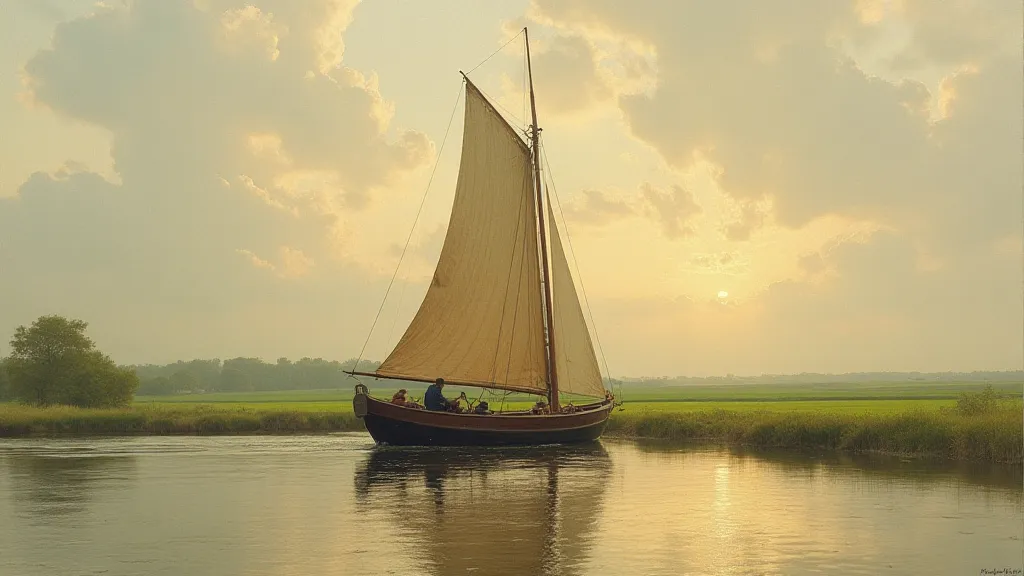
Distinctive Design Features – A Response to Environment
The tjalk's most defining characteristic is its remarkably flat bottom. This design allows the vessel to easily navigate shallow waters, minimizing the risk of running aground. Coupled with a wide beam, the flat bottom provides significant stability, crucial for carrying heavy loads. The challenge of maintaining stability with a wide beam is a recurring theme in boat design globally; other cultures have developed similarly effective solutions, often specific to their own environments, like the designs found in Norwegian fishing boats, demonstrating a common thread of maritime adaptation.
Other key design features include:
- Sharp Stern: The pointed stern, as opposed to the rounded sterns common in other sailing vessels, reduces water resistance and improves maneuverability. This streamlined approach to stern design wasn't unique to the tjalk, and principles like these can be observed in the construction of a skiff as well.
- High Bow: The elevated bow helps to cut through waves and prevent water from flooding the deck.
- Shallow Draft: This is a direct consequence of the flat bottom, allowing the tjalk to operate in incredibly shallow water.
- Traditional Mast Placement: The mast is typically located towards the aft end of the vessel, a design choice that enhances stability and contributes to the tjalk's distinctive profile.
The Art of Tjalk Construction – A Legacy of Skill
Building a tjalk was a labor of skilled craftsmanship, traditionally passed down through generations of boat builders. The process involved careful selection of timber, often oak for the keel and frames, and pine for the hull planks. The planks were meticulously shaped and fastened together using traditional methods, often involving wooden pegs and copper rivets. The precision and care involved highlight the importance of a deep understanding of wood properties and structural integrity - skills that are essential in any boatbuilding tradition, from the construction of a Perahu Pinisi of Indonesia to a modern composite sailboat. The focus on careful wood selection and skilled joinery is a hallmark of many traditional boatbuilding cultures around the world.
The construction of the flat bottom was a particularly demanding task, requiring precise measurements and expert woodworking skills. The hull was carefully caulked to ensure watertightness, a vital consideration for a working vessel. The attention to detail wasn’t just about functionality; it was about creating a vessel that would last for generations, a testament to the skill of the craftsman.
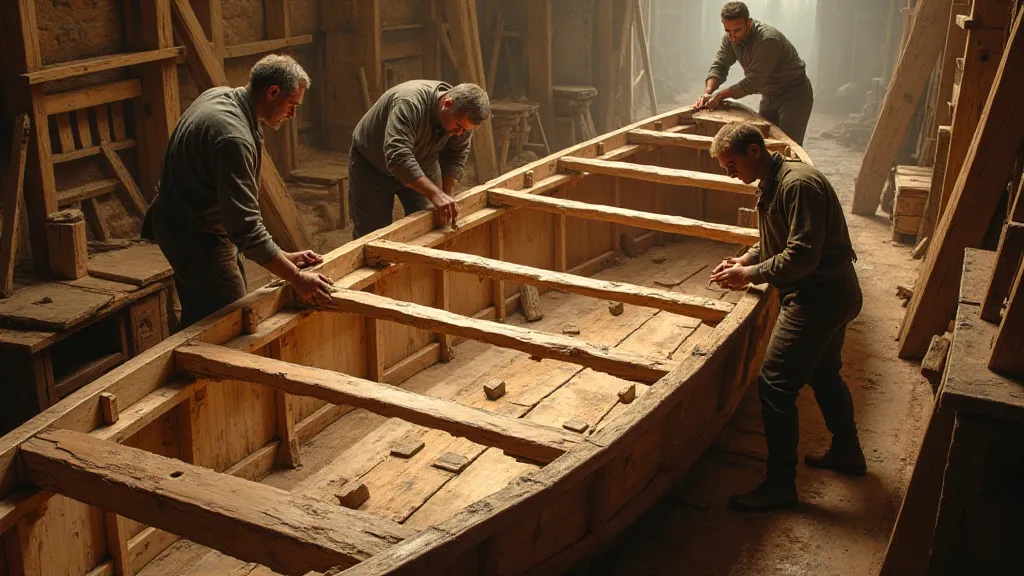
Beyond Functionality: The Cultural Significance of Tjalks
The tjalk wasn't merely a working vessel; it was a symbol of Dutch ingenuity, resilience, and connection to the water. The unique design, born of necessity, became a source of regional pride and a testament to the skills of the Frisian boat builders. They represent a key piece of cultural heritage, much like the Perahu Pinisi of Indonesia, where boatbuilding traditions are intricately linked to cultural identity and maritime trade. The importance of a vessel extending beyond its utilitarian purpose is a recurrent theme in maritime cultures globally; a boat is often an embodiment of community values and heritage.
Decline and Preservation – A Race Against Time
The rise of motorized transport in the 20th century led to a decline in the use of sailing tjalks. Many were converted to motor vessels or, sadly, scrapped. The transition to powered vessels was a common phenomenon globally, impacting traditional sailing cultures everywhere. However, a renewed appreciation for these historic vessels has spurred efforts to preserve and restore them. The preservation efforts reflect a broader recognition of the importance of safeguarding maritime heritage. These initiatives frequently involve meticulous archival research and an understanding of historical shipbuilding techniques.
Today, a number of beautifully restored tjalks are used for recreational sailing, tourism, and as liveaboard homes. Several organizations are dedicated to preserving the traditional boat building techniques associated with the tjalk, ensuring that this unique maritime heritage continues to thrive. These efforts often involve meticulous research into historical construction methods and a commitment to using traditional materials and techniques. This painstaking process is essential for ensuring that the restored tjalks retain their authenticity and historical accuracy. The ongoing work echoes the commitment found in other maritime traditions, highlighting the enduring value of preserving these tangible links to the past. Further bolstering these restoration efforts are modern advancements in materials science, allowing for a more accurate reproduction of historic vessels while ensuring structural integrity.
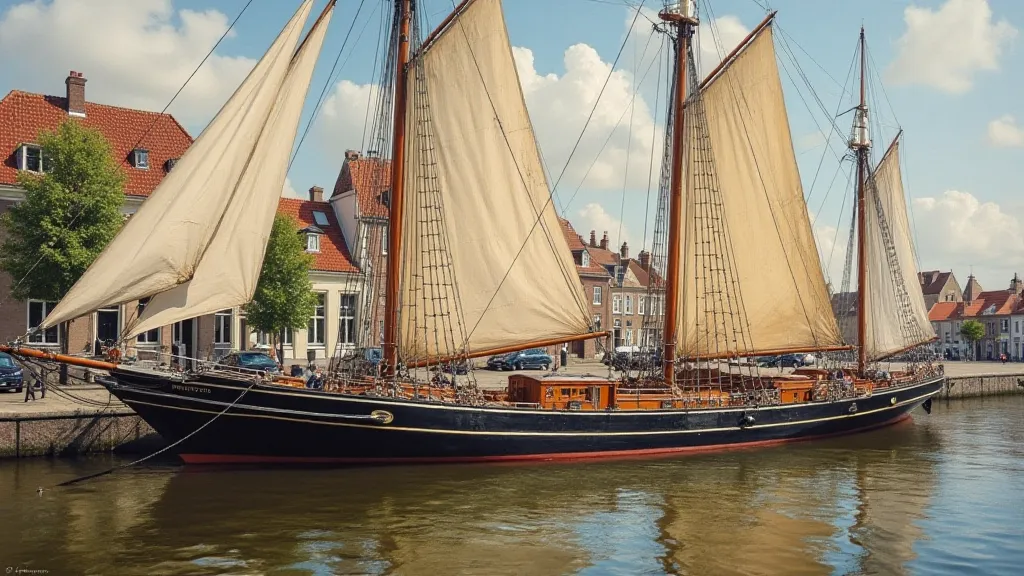
The Enduring Lessons of the Tjalk
The tjalk stands as a testament to the ingenuity and resourcefulness of Dutch boat builders. More than just a vessel, it represents a vital part of the Netherlands’ maritime history and cultural identity. Its unique design and enduring legacy continue to inspire admiration and respect around the world. The story of the tjalk is a powerful reminder of the connection between human innovation, environmental adaptation, and cultural heritage. The careful consideration of hydrodynamics and structural integrity, honed over generations, provides valuable lessons for modern boat designers as well. Just as in the design of a traditional skiff, simplicity and functionality are key. The emphasis on these core principles demonstrates a profound understanding of the relationship between form and function in boat design, lessons that continue to resonate with contemporary naval architects and maritime engineers.
The lessons learned from the design and construction of the tjalk extend beyond the practicalities of boatbuilding. They encompass a broader understanding of how human ingenuity can be harnessed to overcome environmental challenges and create vessels that are not only functional but also deeply intertwined with cultural identity. The tjalk serves as a living example of how traditional knowledge can be preserved and adapted for future generations, ensuring that the legacy of Dutch maritime heritage continues to thrive.
